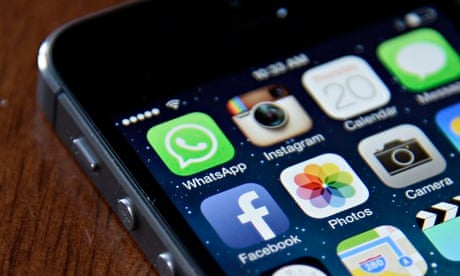Five years ago, if you wanted to complain or needed help with a product or service purchase, you had to email or call a helpdesk. These days, you use Twitter. But not for long, because WhatsApp – the mobile messaging app bought by Facebook for $19bn – could be the primary customer service channel of the future.
In internet time, the future means "within 18 months". If you work for a brand that currently relies on Twitter to handle customer service enquiries, you should think about exploring WhatsApp, running a test-and-learn operation and putting it into your marketing plans as soon as possible. Why? Here are my four reasons.
1. The numbers
Twitter reports to have 241 million active users. WhatsApp has 450 million. Of those, only 46% of users on Twitter return daily – on WhatsApp, it's 70%. Twitter has 135,000 new users signing up each day, while WhatsApp has 1 million, users of which are sharing 500m photos.
2. The sign-up method
Some people have made a big deal out of the fact that Twitter was originally built for mobiles, whereas Facebook was built for the net. However, Twitter asks for an email address when you get an account; WhatsApp asks for your phone number. If you look at youth trends around social media and messaging platforms, 18- to 24-year-olds are clustering around apps rather than web logins, and specifically apps that focus on mobile phone functionality, for example connecting through phone numbers and photo messaging.
Why is this important? With Twitter, you might check it on your mobile, and you only might have signed up to get push notifications to your phone's lock screen. Without push notifications enabled, you're inactive in the conversation. With services such as WhatsApp, you only use it from your most personal mobile device, and you're more likely to have them enabled because it's more personal. This means that when you reply to a consumer in WhatsApp, they are guaranteed to see it, rather than it getting lost in the spam folder of an email inbox.
3. Functions that better suit customer service
When people tweet brands for help, the conversation is public or assumed to be public – not great if you want guidance on bra size, coeliac advice or a gift for your partner. WhatsApp is much better suited for a wider range of customer services. Because conversations are personal and private, it means that consumers and shoppers can ask sensitive or private questions, and receive a quick, personal response knowing their comments are not indexed on the internet for life.
That said, WhatsApp also allows users to create broadcast lists of contacts that you can send a broadcast message too (obviously you'd want to use this carefully and sparingly; WhatsApp contacts will not like being spammed).
You can also add photos, movies and voice messages to a WhatsApp comment, meaning you can share explainer videos, personalised voice messages, and photo instructions on product use from your customer service agents.
4. What else?
Using WhatsApp could allow retailers to extend the consumer and shopper relationship beyond complaints and customer enquiries. Imagine, for example, using a QR code on product packaging that would allow WhatsApp users to instantly contact your customer service team on their mobile in store – and get an instant response, allaying their concerns and helping them make a better choice over buying your product.
Chinese competitor WeChat is a similar messaging app that offers a few extra functions from a brand or shopper marketing perspective. It allows you to buy products and play games from within the app. Now imagine the possibilities if retailers were to use this functionality within the shopper journey.
With 50% of US social media users (pdf) using the channel to complain and raise issues with brands, the appetite to use mobile-based platforms for two-way brand communications is already there. With WhatsApp, you can deliver quick, tailored messages on a rapidly growing platform destined to be the first truly pan-global billion-person messaging service. This ultimately means cost efficiencies, scalable messaging and increased engagement and loyalty.
One final reason to consider WhatsApp as your primary online customer service channel is that fact it is the number one messaging app in India. If your brand already outsources its online customer service to India, you'll be able to utilise a cost-effective, highly educated and efficient workforce who already know how to use WhatsApp effectively.
Viv Craske is head of digital at Live & Breathe – follow the brand on Twitter @liveandbreathe_
Get more articles like this sent direct to your inbox by signing up for free membership to the Guardian Media Network – this content is brought to you by Guardian Professional.

Comments (…)
Sign in or create your Guardian account to join the discussion